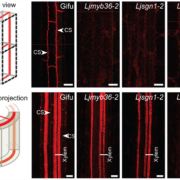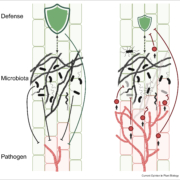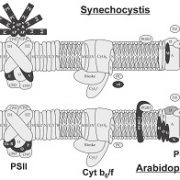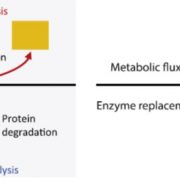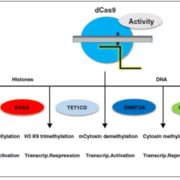Review: Scripting a new dialogue between diazotrophs and crops
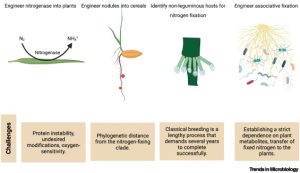 All organisms need nitrogen to produce nucleic and amino acids, but nitrogen-limitation is common for many plants. Although nitrogen is very abundant in the atmosphere, most is inaccessible due to the triple bond that renders N2 relatively inert. Tremendous crop yields in recent decades are attributable largely to the application of ammoinum (NH4+) and other forms of accessible nitrogen to fields, yet these fertilizers are both energetically costly to produce and highly polluting. Diazotrophs are organisms (bacteria or archea) that are able to “fix nitrogen” by breaking the triple bond to produce ammonium, which is accessible for use by other organisms. Some diazotrophs are the familiar endosymbiotic Rhizobia bacteria (which associate with a very limited set of plant species), but others can fix nitrogen as free-living organisms. In this excellent review, Chakraborty et al. explore the challenges and opportunities of exploiting free-living diazotrophs as living fertilizers for crops. A specific focus of this review is the dialogue (information and metabolite exchange) between the plant and the diazotroph. Understanding this dialogue provides opportunities to enhance the production of fixed nitrogen by the diazotroph and its release for uptake by the plant. Finally, the article discusses strategies through which genetically engineered microbes could be employed safely in the field, and in a way that is acceptable to the public. (Summary by Mary Williams @PlantTeaching) Trends Microbiology 10.1016/j.tim.2023.08.007
All organisms need nitrogen to produce nucleic and amino acids, but nitrogen-limitation is common for many plants. Although nitrogen is very abundant in the atmosphere, most is inaccessible due to the triple bond that renders N2 relatively inert. Tremendous crop yields in recent decades are attributable largely to the application of ammoinum (NH4+) and other forms of accessible nitrogen to fields, yet these fertilizers are both energetically costly to produce and highly polluting. Diazotrophs are organisms (bacteria or archea) that are able to “fix nitrogen” by breaking the triple bond to produce ammonium, which is accessible for use by other organisms. Some diazotrophs are the familiar endosymbiotic Rhizobia bacteria (which associate with a very limited set of plant species), but others can fix nitrogen as free-living organisms. In this excellent review, Chakraborty et al. explore the challenges and opportunities of exploiting free-living diazotrophs as living fertilizers for crops. A specific focus of this review is the dialogue (information and metabolite exchange) between the plant and the diazotroph. Understanding this dialogue provides opportunities to enhance the production of fixed nitrogen by the diazotroph and its release for uptake by the plant. Finally, the article discusses strategies through which genetically engineered microbes could be employed safely in the field, and in a way that is acceptable to the public. (Summary by Mary Williams @PlantTeaching) Trends Microbiology 10.1016/j.tim.2023.08.007


